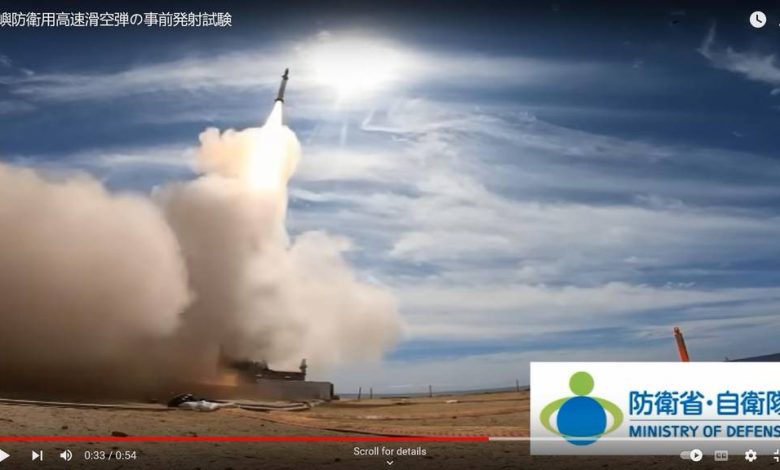Japan reveals test launch of its hypersonic strike missile program

CHRISTCHURCH, New Zealand — Japan has revealed video footage of the maiden test launch of a hypersonic missile currently under development.
Japan’s Acquisition, Technology and Logistics Agency – ATLA for short – published the video on its official YouTube page on July 4. In an accompanying explanation, it said it had “conducted a pre-launch test of a Hyper-Velocity Gliding Projectile for island defense” in California on March 23.
Examining the video footage, Timothy Wright, research associate in the Defence and Military Analysis Programme of the U.K.-based International Institute for Strategic Studies (IISS), offered this explanation to Defense News:
“Japan conducted two preliminary tests of its so-called HVGP in March and April, 2024 respectively. The missile’s manufacturer said the purpose of the test was to validate ‘measurement’ units, possibly meaning the missile’s inertial navigation system. ATLA did not say whether the warhead separated from the booster during either test.”
Once fielded, the HVGP, made by Mitsubishi Heavy Industries, will be launched from a truck using a booster, after which the warhead separates and glides towards its target.
Wright noted, “Japan is developing the HVGP for both anti-ship and land attack missions to intercept and eliminate invading forces against Japan at a distance and at an early stage.”
ATLA has previously released computer animations of an HVGP attacking an enemy aircraft carrier.
When development commenced in fiscal 2015, the HVGP was slated to enter service in 2029. However, Japan’s perceived deterioration of its security environment – prompted primarily by China and North Korea – caused defense leaders to accelerate the missile’s development by three years.
The high-supersonic Block I version of the HVGP, with an estimated maximum range of 310 miles (500km), is now expected to be fielded by the Japan Ground Self-Defense Force (JGSDF) in 2026.
As part of its incremental development, a hypersonic Block 2 version, with perhaps an 1,864-mile (3,000km) range, will be fielded in around FY2030.
“Japan’s current missile capabilities reflect the restrictions of its post-1945 defense posture, but those limitations will soon change substantially following Tokyo’s groundbreaking decision in 2023 for it to procure so-called ‘counterstrike’ capabilities,” Wright said.
The IISS researcher said Tokyo is developing “at least seven new types of air-, sea- and ground-launched missiles for land and maritime roles, and buying three different missile designs from its U.S. ally”.
One of those American missiles is the Joint Air-to-Surface Standoff Missile (JASSM). Also on July 4, ATLA confirmed it had signed an agreement to acquire the Lockheed Martin-made weapon. The U.S. had approved a $104 million Foreign Military Sale of 50 AGM-158B/B-2 JASSMs with extended range last August.
These, plus the HVGP, will strengthen Japan’s “stand-off defense capabilities in order to quickly and remotely intercept and eliminate invading forces against our country,” ATLA said.
Japanese ground forces are expected to eventually field two HVGP battalions.
“Once these systems enter service in large numbers, Japan will possess one of the most significant long-range strike capabilities in the Asia-Pacific region,” said Wright.
Gordon Arthur is an Asia correspondent for Defense News. After a 20-year stint working in Hong Kong, he now resides in New Zealand. He has attended military exercises and defense exhibitions in about 20 countries around the Asia-Pacific region.







